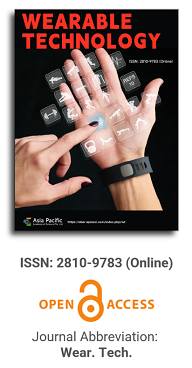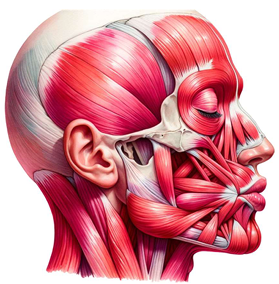

This paper delves deeply into the innovative realm of integrating human emotions with wearable technology. The primary focus is on the conceptualization and development of a kiss transfer device that harnesses the power of wearable technology to bridge the physical gap in human-human interactions. By investigating the intricate nuances of the human-human kissing process, the research seeks to replicate this intimate gesture through a technological medium. The paper not only elaborates on the anatomy, evolution, and hormonal dynamics of kissing but also underscores the transformative potential of wearable technology in capturing and transmitting these intimate moments. This exploration opens up new horizons for long-distance relationships, offering a tangible touchpoint that goes beyond traditional communication methods. Through this pioneering work, the research positions wearable technology as not just a tool for communication but as an extension of our human emotions and expressions.

Design of a wearable upper limb rehabilitation robot and its motion simulation and dynamics analysis
Vol 3, Issue 1, 2022
Download PDF
Abstract
Objective: A new wearable upper limb rehabilitation robot is designed to address the disadvantages of the current desktop upper limb rehabilitation robot, which is bulky and inconvenient to move, and the rationality of the design is verified through the analysis of its motion characteristics and the calculation of joint moments. Methods: Firstly, according to the principle of modular design, the overall structure was designed. Secondly, the SOILDWORKS is used for three-dimensional modeling, and the SOILDWORKS Motion is used to simulate the elbow flexion/extension movement, shoulder flexion/extension movement and shoulder-elbow joint linkage movement of the robot. Finally, the dynamic equation of the system is established based on Lagrange method, and the change curve of the joint torque of the manipulator is calculated by MATLAB software. Results: The simulation results confirmed that the motion simulation curves of shoulder joint, elbow joint and wrist joint were smooth. The dynamic analysis confirmed that the joint torque variation curve was smooth and the maximum joint torque was less than the rated torque of the motor after deceleration. Conclusion: The design of wearable upper limb rehabilitation robot is reasonable, which lays a theoretical foundation for the subsequent research on upper limb rehabilitation robot.
Keywords
References
- Masiero S, Carraro E, Ferraro C, et al. Upper limb rehabilitation robotics after stroke: A perspective from the University of Padua, Italy. Journal of Rehabilitation Medicine 2009; 41(12): 981–985.
- Liang T. Rehabilitation techniques and methods of upper limb function in stroke hemiplegia. Chinese Rehabilitation Theory and Practice 2012; 18(6): 518–520.
- Xia J, Zhou X, Xia H. Effect of early rehabilitation training on functional recovery of hemiplegic limbs in stroke patients. Stroke and Neurological Diseases 2007; 14(6): 372–373.
- Yi J, Zhang Y, Guan L, et al. Research progress of upper limb rehabilitation training system for stroke patients. China Rehabilitation 2013; 28(4): 249–251.
- Beer R, Naujokas C, Bachrach B, et al. (editors). Development and evaluation of a gravity compensated training environment for robotic rehabilitation of post-stroke reaching. Biomedical Robotics and Biomechatronics, 2008. BioRob 2008. USA: 2nd IEEE RAS EMBS International Conference on IEEE, p. 205–210.
- Wang H, Zhao K, Ge E. Effects of rehabilitation robot training on upper limb function and neuroelectrophysiology of stroke hemiplegia. Anhui Medicine 2014; 18(9): 1690–1693.
- Nef T, Riener R (editors). Armin-design of a novel arm rehabilitation robot. Tokyo: IEEE International Conference on Rehabilitation Robotics, p. 57–60.
- Tobias N, Matjaz M, Gabriela K, et al. (editor). Armin exoskeleton for arm therapy in stroke patients. Noordwijk, Netherland: Proceedings of the 2007 IEEE 10th International Conference on Rehabilitation Robotics, p. 68–74.
- Nef T, Mihelj M, Riener R. Armin: A robot for patient cooperative arm therapy. Medical and Biological Engineering and Computing 2007; 45(9): 887–900.
- Mihelj M, Nef T, Riener R (editors). Armin II-7 DoF rehabilitation robot: Mechanics and kinematics. Canada: IEEE International Conference on Robotics and Automation, p. 4120–4125.
- Nef T, Guidali M, Riener R. Armin III—Arm therapy exoskeleton with an ergonomic shoulder actuation. Applied Bionics and Biomechanics 2009; 6(2): 127–142.
- Perry J, Rosen J (editors). Design of a 7 degree-of-freedom upper-limb powered exoskeleton. Biomedical Robotics and Biomechatronic; 2006. BioRob: The First IEEE/RAS-EMBS International Conference on IEEE; p. 805–810.
- Perry J, Rosen J, Burns S. Upper-limb powered exoskeleton design. Mechatronics, IEEE/ASME Transactions on Mechatronics 2007; 12(4): 408–417.
- Gijbels D, Lamers I, Kerkhofs L, et al. The Armeo Spring as training tool to improve upper limb functionality in multiple sclerosis: A pilot study. Journal of Neuroengineering and Rehabilitation 2011; 8(1): 1–8.
- Colomer C, Baldovi A, Torrome S, et al. Efficacy of armeo? Spring during the chronic phase of stroke. Study in mild to moderate cases of hemiparesis. Neurologia (English Edition) 2013; 28(5): 261–267.
- Calabrò R, Russo M, Naro A, et al. Who may benefit from armeo power treatment? A neurophysiological approach to predict neurorehabilitation outcomes. PM&R 2016: 1–8.
- Lv C. Research of a hemiplegia rehabilitation robot for upper limb [PhD thesis]. Shanghai: Shanghai Jiao Tong University; 2011.
- John M. Powered Orthotic Device and Method of Using Same. US patent. US20,080,071, 386 A1. 2008 Mar 2.
- Liu H. Kinematics simulation of 5-DOF robot based on ADAMS. Development and Innovation of Machinery and Electrical 2008; 21(6): 42–44.
- Zhang H, Kong Q, Zheng H, et al. Kinematics analysis and Simulation of five degree of freedom manipulator based on Pro/E and Adams. Machine Building Automation 2009; 38(2): 149–152.
Supporting Agencies
Copyright (c) 2022 Lulu Wang, Xin Hu, Wujing Cao, Fei Zhang, Hongliu Yu

This work is licensed under a Creative Commons Attribution 4.0 International License.

Prof. Zhen Cao
College of Information Science & Electronic Engineering, Zhejiang University
China, China
Processing Speed
-
-
-
- <5 days from submission to initial review decision;
- 62% acceptance rate
-
-
Asia Pacific Academy of Science Pte. Ltd. (APACSCI) specializes in international journal publishing. APACSCI adopts the open access publishing model and provides an important communication bridge for academic groups whose interest fields include engineering, technology, medicine, computer, mathematics, agriculture and forestry, and environment.





